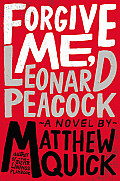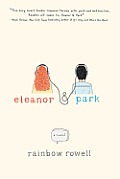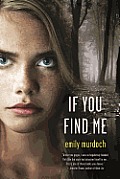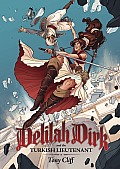Kathi Appelt’s book, The True Blue Scouts of Sugarman Swamp encourages you to curl up and get cozy with the characters and the story. (See my review in a previous blog post.) Appelt writes characters that are down-to-earth and comfortable to be around, so it should come as no surprise that she comes across the same way in an interview.
Today I’m taking part in Appelt’s blog tour by asking her a few questions about writing and her swamp characters. I’ll be giving away one copy to a reader in the U.S. who leaves a comment by midnight (PDT), Monday, September 16. Just tell us about your favorite swamp creature or swamp experience if you have one. Please note: the giveaway is closed. Congratulations to Krysty on winning!
Here’s a little more information about Appelt and a list of the next stops on her blog tour. Keep reading for the interview.
Bio: Kathi Appelt is the author of the Newbery Honor-winning, National Book Award finalist, PEN USA Literary Award-winning, and bestselling The Underneath as well as the highly acclaimed novel Keeper, The True Blue Scouts of Sugar Man Swamp, and many picture books. She is a member of the faculty at Vermont College’s Master of Fine Arts program. She has two grown children and lives in Texas with her husband. For more information, visit her website: kathiappelt.com.
The book trailer:
http://www.youtube.com/watch?v=6wHUMloYN2A
Be sure to check out the next stops on her blog tour!
Interivew with Kathi Appelt
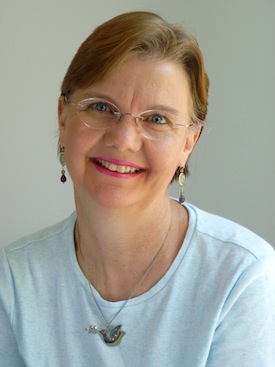
Kathi Appelt. Photo by Ken Appelt.
How did you know you wanted to be a writer?
KA: I originally wanted to be a cowgirl. I was one of those girls who loved horses above all else. But one day, my first grade teacher, Mrs. Beall, stopped by my desk and told me that she believed that I would be a writer when I grew up. There’s something extremely powerful about a first grade teacher’s belief. When it became clear that I wasn’t really cut out for the cowgirl life (after a disastrous barrel-riding fiasco that involved a horse with one blind eye and a pair of pants that split down the middle), that belief held me in good stead. I still owe a debt of gratitude to Mrs. Beall—and all first grade teachers for that matter.
What do you enjoy most about writing?
KA: I love the discovery process. Often, when I’m writing, something will magically show up on the page, and it both startles and amazes me. It’s like digging for gold, I think, and actually finding it.
What do you find to be a challenge?
KA: Really working to discover who my characters are and what it is that they hold most dear, as well as what they most fear. Those are the twin, opposing questions that I have to keep asking of each of my characters. Love and fear are all balled up together, so it’s important to me to understand what that means for the cast and crew.
In The True Blue Scouts of Sugar Man Swamp various characters love watching birds, eating pies, wrestling alligators and protecting the swamp. Do you share in any of those passions?
KA: I do appreciate bird-watching. I’m lucky in that my studio has a large window that looks right into a distinctly wonderful oak tree. So I have a lot of bird comings and goings. Nevertheless, I’m only a bird-gazer really. Not a true watcher. As for wrestling alligators, I’ll save that for braver folks. The thing I’m most concerned about is the swamp, and all of our wild spaces. I think it’s hard to love a swamp, but they play such an integral role in the well-being of our planet. So I am a cheerleader for swamps.
Swamps aren’t the first thing that come to mind when you think of Texas. What can you tell us about the area where the Sugar Man Swamp lies?
KA: It’s true that most people who think of Texas have an image of the dusty canyonlands of west Texas. That area seems quintessentially Texas. But there’s a large region along the eastern border with Louisiana that is part of what was once called the Great Pine Belt. It begins in east Texas and moves east across Louisiana, Mississippi, and on up into the Carolinas. Parts of it are extremely swampy. The area that is probably most like the Sugar Man Swamp is called The Big Thicket. It’s a natural home for alligators and thousands of bird species. Really, it’s worth a drive.
The facts you weave into the story—like those about the ivory-billed woodpecker, wild hogs, possum and raccoon habits—add to the fun of the narrative without breaking the pace for readers. Was it difficult for you to blend fact with fiction while keeping the story moving along?
KA: I love the facts of a story, actually. To me, having the facts gives the story authenticity. Not only that, but I really believe that young readers deserve as much solid information as I can give them. Of course, info-dumping is a real concern. So I work hard to make sure that those wonderful facts don’t overwhelm the story.
The True Blue Scouts of Sugar Man Swamp begs to be read aloud. Did you think about the sound of your words as you wrote them?
KA: In a former life, I really wanted to be a songwriter. And I might have been if I were at all musical. But my professional writing career actually started with picture books, which are meant to be read aloud. All those years of writing picture books has definitely played a role in my effort to make my stories part of an oral tradition. It’s important to me. So, yes, I do think of the sounds of the words, and the rhythm of the sentences. But I’d be lying if I said that they just fell onto the page straight from my head. It takes me tons of revision to get those sounds to work well. And I mean tons.
Without giving anything away, I’ll admit that I was surprised—in a pleasant way—by how all the plot lines came together at the end of the book. Did you know how it was going to end when you started, or did the story change as you created your characters?
KA: I always try to have at least an image of how a story is going to end. In this case, from the start, I knew that Chap would find what his grandfather lost (hope that’s not too much of a spoiler). I’ve found that if I don’t have a small idea about how a story will end, then I have a hard time ever finishing. I tend to roam around in the mucky middle, never to arrive. Having a vague notion of the ending helps me get there. Sort of like having a list at the grocery store. If I don’t have one, then I just walk up and down the aisles in wonder. And if I don’t know what I’m going to do with the items I buy, then that’s even worse. I wind up with a bag of popcorn and nothing for dinner.
What do you hope lingers in the minds of young readers when they finish The True Blue Scouts of Sugar Man Swamp?
KA: Mostly, I hope they’ve had a good laugh or two. And if they end up with a yearning for the Ivory-billed Woodpecker to make her way home, that would be so satisfying.
Is there anything else you’d like to say to readers at Mother Daughter Book Club. com?
KA: My motto, for those of you who are interested in writing your own stories is: write like your fingers are on fire!
Thank you so much for reading my book, and for asking such great questions.

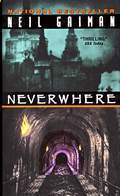 Richard is not the kind of guy to make waves. He lives a normal life in London with a fiancée who tells him what to do and a good-enough job where he performs well even if he doesn’t distinguish himself. That all changes the day he sees what appears to be a homeless girl on the sidewalk who is hurt. When he stops to help her, his life becomes entwined with the underworld of London, a place full of hardship, danger, deprivation and totally unlike anything he has ever experienced before. He also discovers that if he wants his old life back, he’ll have to be daring in ways he never thought he could be.
Richard is not the kind of guy to make waves. He lives a normal life in London with a fiancée who tells him what to do and a good-enough job where he performs well even if he doesn’t distinguish himself. That all changes the day he sees what appears to be a homeless girl on the sidewalk who is hurt. When he stops to help her, his life becomes entwined with the underworld of London, a place full of hardship, danger, deprivation and totally unlike anything he has ever experienced before. He also discovers that if he wants his old life back, he’ll have to be daring in ways he never thought he could be.
